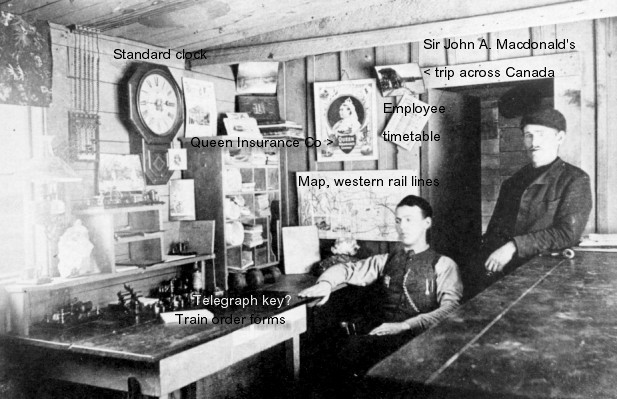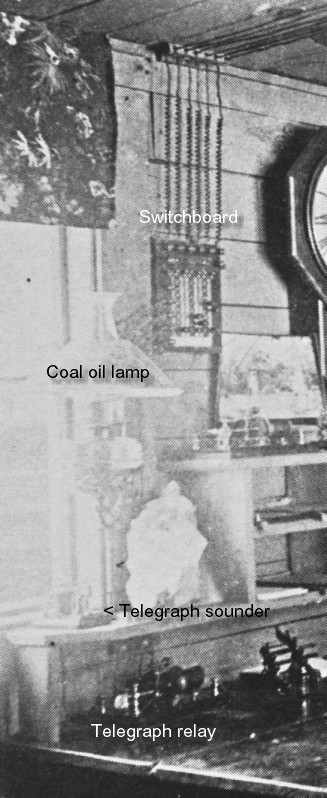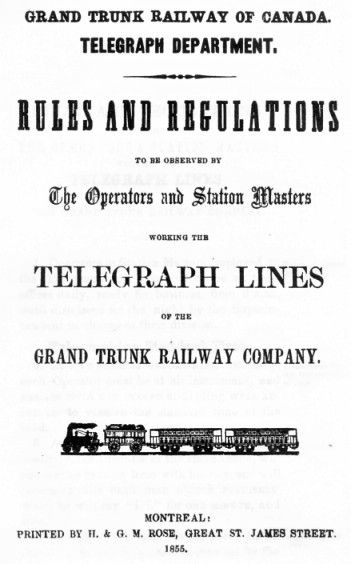So now we are
getting into North American railway telegraph
technology ...
Remember (on the page Telegraph 1) that in 1837 Steinheil
in Germany had accidentally invented the 'earth
return' or 'ground return' when he was trying to use two
railway rails
to act as his telegraph circuit ? ... This was significant
because it meant getting a telegraph signal from
point X to point Y only required one wire as long as both
ends of that wire were
grounded to earth.
Using a water metaphor is more intuitive when explaining
electricity ... but it only goes so far ...
If B was a water pump - instead of a battery - and 'X to
Y' was a water
pipe placed into the ocean on both (ground) ends ... water
could easily
be pumped from X to Y and the ocean would restore its
normal level
between Y and X ... But
we wouldn't expect the particular water
molecules which had been pumped X to Y to migrate back
'home'.
So messages move along our single telegraph wire by
battery power (pressure or 'potential') in the line ...
as long as the line is properly insulated against
current
loss all along the way ...
and as long as the battery is strong enough to
send the
current (potential) as far as we want it to go.
... a gutless water pump and a leaky
water pipe couldn't move much water from X to Y.
As railways generally operate between large terminals
(e.g.
Montreal
and Toronto) with smaller stations along the route (e.g.
Cornwall,
Prescott Junction, Kingston, Cobourg) ... the local
stations had
simple local systems (as seen in the CPR
station photo at the top of this page) and left the
literally
'high-powered technology'
for the main terminals. More about this and pumping
messages
'backwards' Y to X in Telegraph 4 ...
Hardware of the times ...
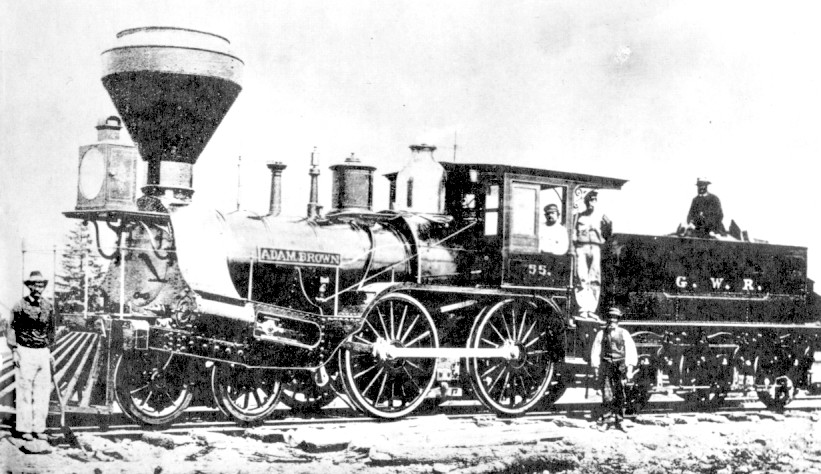
Being a British company, the Grand Trunk Railway began
with 56 locomotives built at Birkenhead, England from
1854 to 1858.
This firm also built 4 of the same type for the Great
Western Railway
of Canada (shown) which was later absorbed by the Grand
Trunk.
By 1860, these wood-burning locomotives were rebuilt to meet the
demands of Canadian service as much as possible.
In particular, this photo circa 1870 shows the addition
of two more
pilot wheels (total 4) to reduce derailments on
the rougher North American track.
After starting up, the Grand Trunk wisely curtailed its
un-American activities and purchased Canadian and
American locomotives.
Look at the guy in the tender ... probably a railfan.

John Augustus
Roebling
(1806-1869) was a German-born bridge engineer. He
eventually came to
America because he wanted to follow his dream to build
suspension
bridges. The Prussians for whom he had been working
didn't need no
steenkin' suspension bridges. So in America he
eventually had the
chance to build the longest railway
bridge in the world (at that time) and the world's
first railway
suspension bridge - over the Niagara Gorge. For
safety, he wanted to
keep horses away from iron horses. So pedestrians,
carriages and wagons
had a separate deck below the railway level and it was
enclosed so
horses could not panic and hop over the side. The
supporting trusses of
the lower level also gave the bridge extra rigidity to
better support
railway traffic. Railway suspension bridges are not
common and you can
imagine why. Roebling also concluded that 2 large
cables supporting
each level would provide more stability that many
smaller cables. So
the bridge has just 4 main cables supporting it.
Construction began on the bridge in 1851, and the
bridge opened in
March 1855 and was used for another 40 years. Trains
crossed at about 5
mph ... so it must have taken about 10 minutes for a
train to get
across - giving passengers a good long look out ...
and down. Groups of people crossing
(e.g. military) were prohibited from marching in step.
Bands could not play as they
crossed the bridge unless they rode in a wagon. No
more than 60 cattle
were allowed on the bridge at any one time ... divided
into groups of
20 ... each with its own drover to keep them from
charging off if a
locomotive ran over head.
At least we can
still marvel that they built such a thing back in
the 1850s.
Because of Canadian government subsidy and bond
guarantee legislation, the
Great Western ... like the Grand Trunk ... originally
operated with a 5
foot 6 inch gauge. Two other railways used the bridge
as well ... the
New York Central with today's standard gauge of 4 feet
8 1/2 inches ...
and the Canandaigua & Niagara Falls with a 6 foot
gauge.
Four rails were
necessary on the railway deck to handle the traffic
from these railways.
In the photo below, three of the rails have recently
been used - broad-gauge locomotives sometimes pulled
standard gauge cars.
This made things interesting for the switchmen when the
time came.
You can see the four main cables coming down from the
support towers.
It was in this era that the first telegraphs were used.
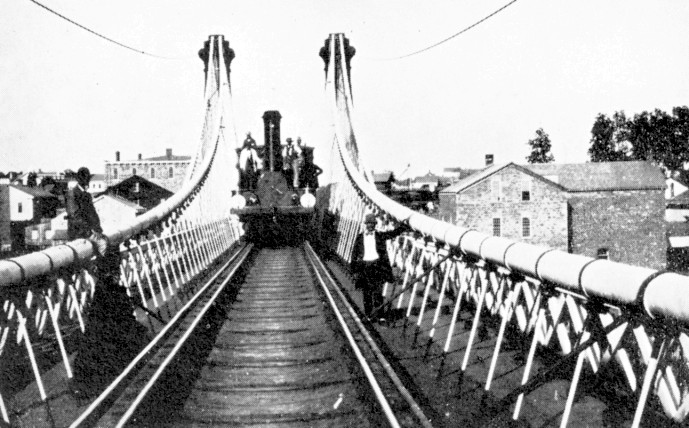
ON TO
TELEGRAPH PART 4
Back to Sitemap
